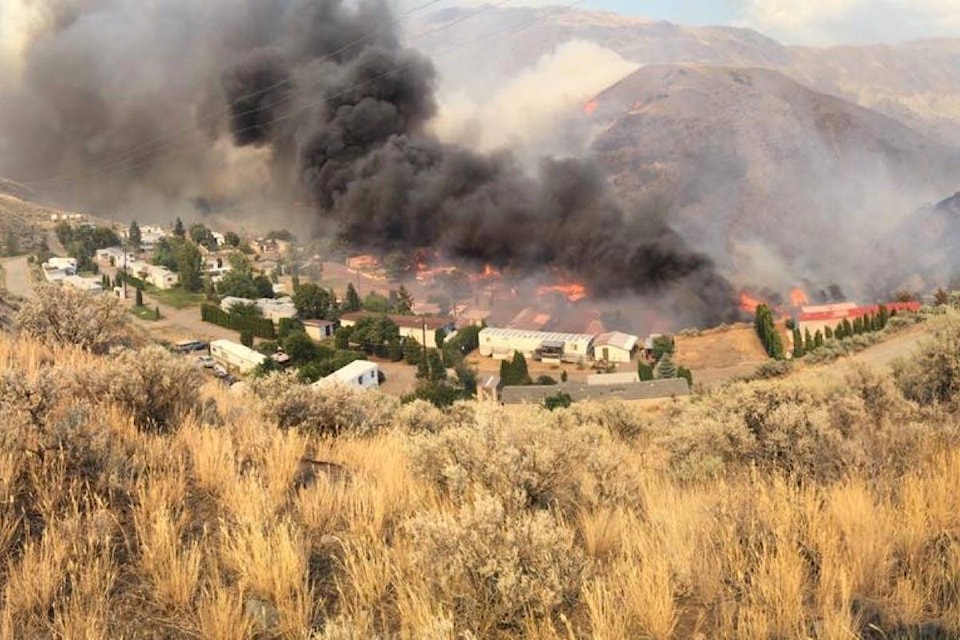By Sean Brady – Kamloops This Week
As evacuation orders are rescinded and residents are slowly given the all-clear to return home, the property destruction caused by wildfires in the region is becoming clear.
A total of 234 structures were destroyed or damaged from the Elephant Hill fire, the Martin Mountain fire near Monte Lake and the Little Fort complex fire, according to data released Tuesday by the Thompson-Nicola Regional District.
The Little Fort fires destroyed one residence and three other buildings, while the Martin Mountain fire destroyed one residence and caused minor damage to an outbuilding.
But it was the Elephant Hill fire, the behemoth 192,000-hectare blaze that stretches 93 kilometres from Ashcroft to the edge of Sheridan Lake, that caused most of the damage.
The biggest loss came early when the fire ripped through the Boston Flats trailer park north of Ashcroft, causing the loss of 45 residences on July 7.
The next major loss came one week later at Loon Lake, 32 kilometres to the north, where 40 residences, 32 other buildings and the Loon Lake fire hall were lost when the fire saw dramatic growth over the weekend of July 15.
Another 30 kilometres north and one month later, another 33 residences and 24 other buildings were destroyed at Pressy Lake.
Other losses include three residences at Hihium Lake, three more on French Road and two in the Village of Cache Creek. Young Lake lost five non-residence structures.
All told, 132 residences, 82 other structures and four institutional structures were lost to the three fires in the TNRD and another 19 received minor damage.
“Other” buildings might include outbuildings like garages, sheds or farm buildings, while “institutional” buildings refer to things like fire halls and municipal or government structures.
The TNRD also said a number of important infrastructure features including hydro and telecommunications were lost, but are not included in these figures.
